🔥From the 1980s to the AI Era! How Did the 51 Microcontroller Become a Timeless Classic in Electronics?
🕰️【Origin】The “First Generation King” Born from the Industrial Revolution
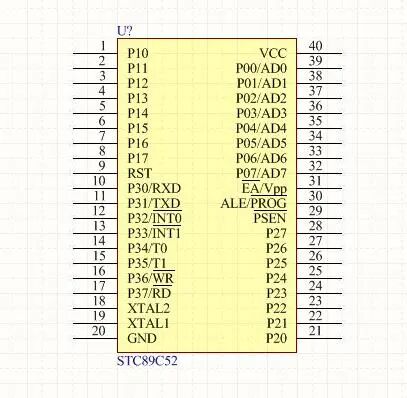
In the vast expanse of technology, the 51 microcontroller shines like a brilliant morning star. Although it was born decades ago, it still radiates a unique brilliance in many fields today. Let us travel through the time tunnel to explore its legendary origins.
In the 1970s, a silent electronic revolution began globally. In 1971, Intel launched the world’s first 4-bit microprocessor, the 4004. This innovation ignited a blazing fire of electronic technology innovation, laying the foundation for the subsequent development of microcontrollers. However, it was the MCS-48 series introduced by Intel in 1976 that truly defined the form of microcontrollers. This 8-bit microcontroller integrated the CPU, RAM, ROM, and I/O interfaces onto a single chip, condensing the core functions of a computer into a compact space, thus ushering in the era of “Single Chip Microcomputers” (SCM), like planting a seed of hope in the electronic world.
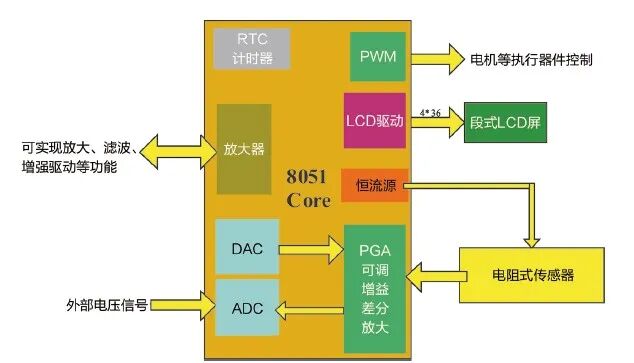
However, it was the MCS-51 series launched by Intel in 1980 that truly allowed the 51 microcontroller to shine in the field of industrial control. The 8051 chip, with its configuration of 128B RAM, 4KB ROM, 4 8-bit I/O ports, and full-duplex serial port, became the standard solution in industrial control. Its Harvard architecture separated program memory from data memory, creating two efficient information highways for the chip, significantly improving instruction execution speed; the rich set of 111 instructions endowed it with powerful “intelligence,” enabling it to flexibly handle various complex industrial control tasks, thus laying the technical foundation for the 51 microcontroller for the next 40 years.
In 1984, Intel made a far-reaching decision—opening the 51 core for licensing. This move was like opening Pandora’s box, triggering a technological frenzy among global semiconductor companies. Atmel launched the AT89 series in 1989, which was the first to use Flash memory instead of ROM, allowing for online programming of the microcontroller, making development more convenient and efficient, like providing developers with a universal key; Philips developed the enhanced 80C51, adding peripherals such as I²C bus and PWM output, expanding the application boundaries of microcontrollers, enabling them to connect to more external devices and achieve richer functionalities; STC introduced the 1T architecture microcontroller (traditionally 12T), shortening the instruction cycle to 1/12, greatly improving operational efficiency and achieving a qualitative leap in processing speed.
During this period, the 51 microcontroller gradually penetrated from the exclusive field of industrial control into home appliances (such as microwave oven timing control), communication (Modem protocol processing), and the concept of “MCU” (Microcontroller) emerged. It acted like a versatile little sprite, casting spells in different fields, making various devices smarter and more efficient.
🧠【Architecture】A “Microcomputer” with All Essential Components
Despite its small size, the 51 microcontroller’s internal architecture contains immense power, making it a “super brain” in the electronic world, integrating the core components of a computer onto a tiny chip to achieve complex control functions.
Harvard Architecture: Independent Storage for Programs and Data, 30% Improvement in Instruction Execution Efficiency
The 51 microcontroller adopts Harvard architecture, creating dedicated high-speed channels for programs and data. Program code is stored in Flash ROM, while data is stored in RAM, with both operating independently. This design greatly enhances instruction execution efficiency, improving execution speed by about 30% compared to Von Neumann architecture, allowing for rapid responses to various tasks, like an agile sprinter racing on the electronic track. In intelligent temperature control systems, the 51 microcontroller can quickly read data from temperature sensors while efficiently executing temperature control algorithms, ensuring that the temperature remains stable within the set range.
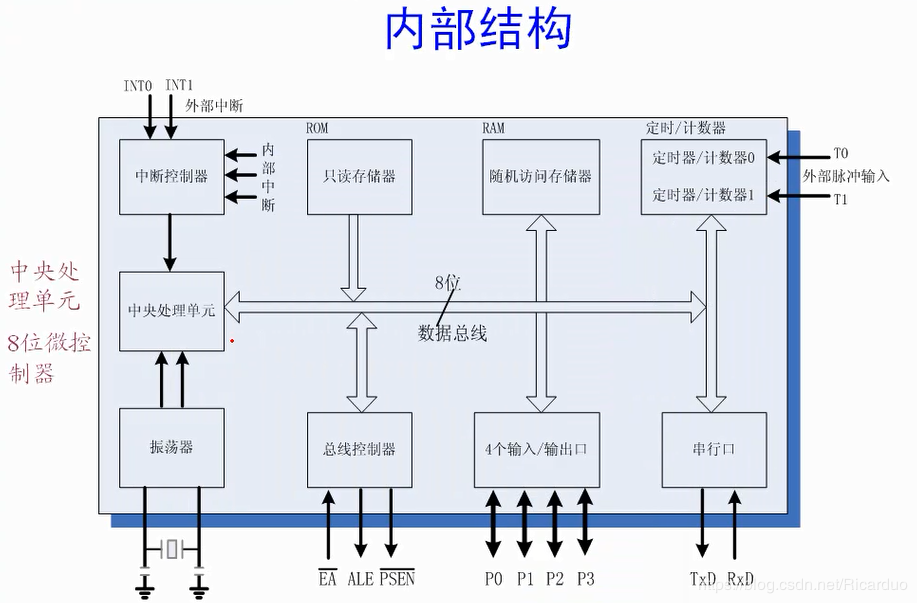
111 Instruction Set: Supports Bit Operations (e.g., CLR P1.0 to Turn Off the Light Directly)
The 51 microcontroller has a rich set of 111 instructions covering data transfer, arithmetic operations, logical operations, program control, and more, like having a universal toolkit. These instructions are not only powerful but also support bit operations, allowing the microcontroller to control each pin precisely. The CLR P1.0 instruction can directly set the P1.0 pin low, turning off the light connected to that pin, making operations simple and efficient, like a magician waving a wand to achieve various magical control effects. In traffic light control systems, through different instruction combinations, the 51 microcontroller can precisely control the on/off timing of each traffic light, ensuring orderly traffic.
Peripheral Matrix: Timer/Counter, Full-Duplex Serial Port, PWM Module
The peripheral matrix of the 51 microcontroller is its “secret weapon,” equipped with timer/counter, full-duplex serial port, PWM module, and more, providing rich possibilities for microcontroller applications. The timer/counter acts like a precise clock, used for timing interrupts, frequency measurement, etc. In the design of electronic clocks, the timer/counter can accurately control the display of time, ensuring that time is displayed without error; the full-duplex serial port serves as a bridge for communication between the microcontroller and external devices, allowing data transmission with computers, Bluetooth modules, etc. In smart home systems, the 51 microcontroller can communicate with mobile apps via serial ports, enabling remote control of home appliances; the PWM module can output pulse width modulation signals for motor speed control, light brightness adjustment, etc. In smart fan control systems, the PWM module can automatically adjust the fan speed based on ambient temperature, achieving intelligent energy saving. These peripherals work together, allowing the 51 microcontroller to adapt to various complex application scenarios, becoming a “jack of all trades” in the electronic world.
🌱【Ecosystem】The “Open Source Myth” from Laboratory to Trillion-Dollar Industry
After years of development, the 51 microcontroller has formed a large and mature ecosystem, gradually transitioning from initial laboratory research to a trillion-dollar industry, becoming an indispensable part of the electronics field.
Mature Toolchain: Keil Development Environment + SDCC Compiler, the First Choice for University Teaching
In terms of development tools, the 51 microcontroller has an extremely mature toolchain, with the Keil development environment being a classic. Keil provides an intuitive graphical interface, like creating a convenient operating platform for developers, making coding, compiling, and debugging simple and efficient. When using Keil to develop 51 microcontroller projects, developers can easily create projects, write code, and quickly locate and solve problems using debugging tools. It also supports programming in C and assembly language, meeting the needs of different developers. Whether beginners or experienced engineers, they can find a suitable development method in Keil. The open-source SDCC compiler provides developers with more options, supporting cross-platform use, like a universal key that can function across different operating systems, and it has better support for the C99 standard, allowing developers to use more advanced C language features. In cost-sensitive projects, the open-source and free nature of the SDCC compiler makes it the first choice. These mature toolchains make the development of the 51 microcontroller easier and have made it the standard platform for embedded teaching in universities, training a large number of excellent embedded development talents each year. In university courses on electronic information, automation, etc., students develop practical projects using the 51 microcontroller, mastering embedded system development skills and laying a solid foundation for their future career development.
Chinese Power: Manufacturers like STC and CH551 Produce 90% of Global 51 Chips in the Yangtze River Delta
In the production field of the 51 microcontroller, the power of China cannot be underestimated. The STC89 series microcontroller launched by STC has become a popular choice in the market due to its high performance, low power consumption, and rich peripheral resources. The STC89C52 microcontroller has 8K bytes of system programmable Flash memory, meeting the storage needs of most small projects, widely used in smart home, industrial control, etc. In the design of smart sockets, the STC89C52 microcontroller can achieve timing control and power monitoring functions. The CH551 series from Qinheng Microelectronics stands out with its USB direct connection function, bringing new ideas to microcontroller applications. In devices that require high-speed data transmission with computers, the CH551 microcontroller can quickly transmit data via USB interface, improving the efficiency of the device. According to statistics, 90% of the world’s 51 microcontrollers are produced by semiconductor companies in the Yangtze River Delta. These companies not only meet the huge domestic demand for 51 microcontrollers but also export products worldwide, allowing China’s 51 microcontrollers to occupy an important position in the international market.
Model Matrix: From 1 Yuan Level STC89C51 to 20 Yuan Level Enhanced Type, Covering 10+ Industries: The Global 51 Microcontroller Market Size Will Reach 3.8 Billion USD by 2024, with Over 70% Market Share in Power Tools
The 51 microcontroller has a rich model matrix, from the affordable 1 Yuan level STC89C51 to the powerful 20 Yuan level enhanced microcontroller, meeting the needs of different users. In the smart home field, the 51 microcontroller can achieve intelligent control of home appliances, making life more convenient and comfortable. By combining with sensors and wireless communication modules, the 51 microcontroller can realize functions such as smart lighting and smart curtains; in the industrial control field, it can precisely control production equipment, improving production efficiency and product quality. In automated production lines, the 51 microcontroller can control parameters such as motor speed and position, ensuring stable operation of the production line; in medical devices, the 51 microcontroller can be used to monitor and control medical instruments, safeguarding patients’ health. In devices such as blood glucose meters and blood pressure monitors, the 51 microcontroller can collect, process, and display data. According to market research institutions, the global 51 microcontroller market size is expected to reach 3.8 billion USD by 2024, with over 70% market share in cost-sensitive fields such as electric tool control and smart sensors, demonstrating strong market competitiveness.
🚀【Applications】The “Invisible Brain” from Robotic Arms to Smart Homes
The 51 microcontroller, with its powerful functions and flexible characteristics, plays an indispensable role in many fields, becoming the “invisible brain” of various devices, silently driving them to operate efficiently. Let us take a look at the exciting applications of the 51 microcontroller in different fields.
Industrial Control: Robotic Arm Precision Positioning, PID Algorithm + Multi-Axis PWM Synchronous Control
In industrial production, the precise positioning of robotic arms is crucial. The 51 microcontroller, combined with PID algorithms and multi-axis PWM synchronous control technology, can achieve high-precision motion control of robotic arms. Through the PID algorithm, the 51 microcontroller can accurately calculate the adjustment amount based on the deviation between the actual position of the robotic arm and the target position, like a precise navigator guiding the robotic arm to reach the specified position accurately; multi-axis PWM synchronous control allows multiple motors to work in coordination, ensuring that all joints of the robotic arm can move in harmony. In automotive manufacturing production lines, robotic arms controlled by the 51 microcontroller can quickly and accurately complete tasks, greatly improving production efficiency and product quality.
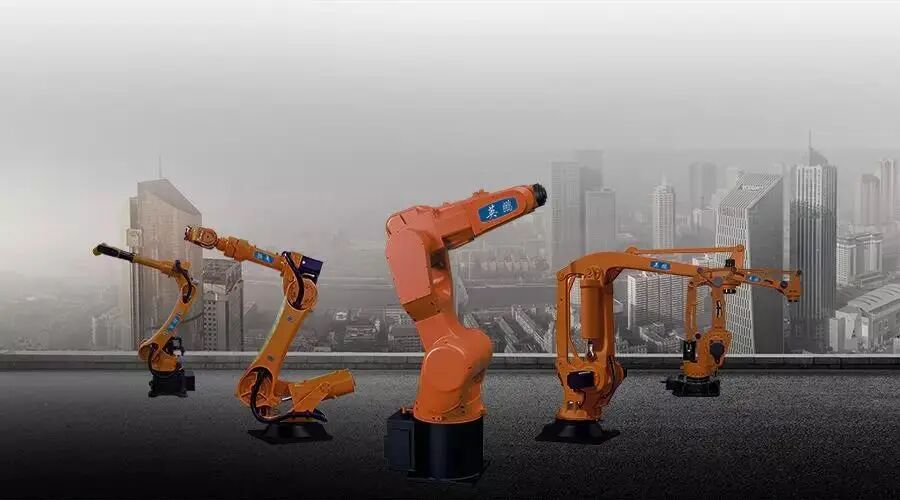
Home Appliances: Smart Refrigerator Temperature Closed Loop, DS18B20 Sensor + Relay Control
In the smart home field, the 51 microcontroller also shows its prowess. For example, in smart refrigerators, the 51 microcontroller, combined with the DS18B20 temperature sensor and relay control, achieves precise closed-loop control of the refrigerator’s temperature. The DS18B20 sensor acts like the “temperature eye” of the refrigerator, monitoring the internal temperature in real-time and transmitting the temperature data to the 51 microcontroller; the 51 microcontroller then controls the cooling device’s switch via the relay based on the preset temperature value. When the internal temperature exceeds the set value, the 51 microcontroller controls the relay to turn on the cooling device to lower the temperature; when the temperature reaches the set value, it controls the relay to turn off the cooling device, thus maintaining the stability of the refrigerator’s internal temperature and providing reliable assurance for food preservation.
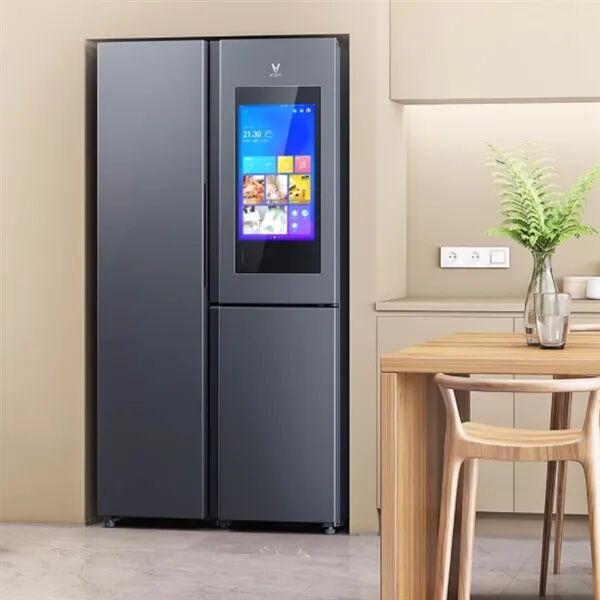
Automotive Electronics: Adaptive Steering Headlights, Light Sensor + Ultrasonic Distance Measurement Fusion
In the field of automotive electronics, the 51 microcontroller provides strong support for the intelligence and safety of vehicles. Adaptive steering headlights are a typical application of the 51 microcontroller. By fusing data from light sensors and ultrasonic distance measurement sensors, the 51 microcontroller achieves the intelligent adaptive steering function of headlights. The light sensor can sense changes in ambient light; when the light dims, the 51 microcontroller automatically turns on the headlights; the ultrasonic distance measurement sensor can monitor the distance between the vehicle and obstacles in real-time. When the vehicle turns, the 51 microcontroller controls the headlights to turn in the direction of the turn based on the data from the ultrasonic distance measurement sensor and the vehicle’s steering angle, illuminating the curve in advance and improving nighttime driving safety.
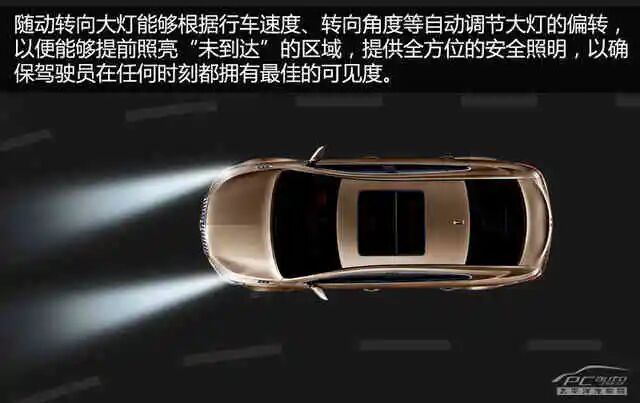
Consumer Electronics: Electronic Clock + Temperature and Humidity Monitoring, DHT11 Sensor + LCD1602 Display
In the consumer electronics field, the 51 microcontroller is also ubiquitous. Electronic clocks and temperature and humidity monitors are common application cases. The 51 microcontroller, paired with the DHT11 temperature and humidity sensor and LCD1602 display, achieves the functions of time display and temperature and humidity monitoring. The DHT11 sensor can quickly and accurately measure the temperature and humidity of the environment and transmit the data to the 51 microcontroller; the 51 microcontroller processes the data and displays it in real-time on the LCD1602 display, allowing users to understand the temperature and humidity information of the environment at any time. In daily life, we can place such devices in rooms to conveniently adjust our lifestyle based on temperature and humidity conditions.
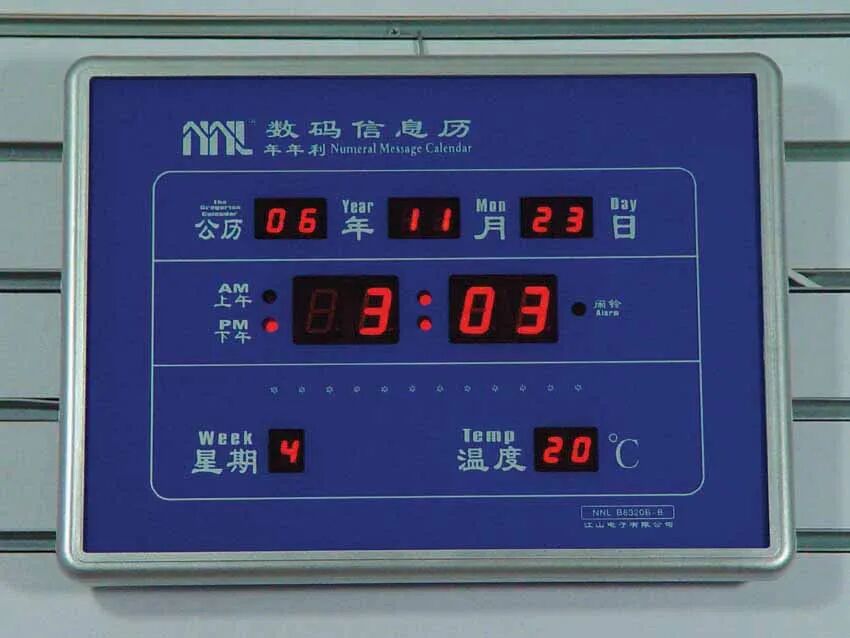
🌟【Prospects】The “Secret to a Comeback” of Old Trees Blooming New Flowers
In today’s rapidly developing technology, the 51 microcontroller, this “electronic veteran,” has not been submerged by the waves of the times. Instead, it has revitalized itself through continuous innovation, achieving a magnificent comeback of old trees blooming new flowers.
Technological Innovation: 55nm Process + 32-bit Math Co-Processor, 25 Times Performance Improvement
With the continuous advancement of semiconductor processes, the 51 microcontroller is also continuously upgrading. Some new 51 microcontrollers use 55nm process technology, which increases the chip’s integration and reduces power consumption, like putting a lightweight “energy-saving coat” on the microcontroller. At the same time, integrating a 32-bit math co-processor has become a key step in enhancing the performance of the 51 microcontroller. With this powerful “math assistant,” the 51 microcontroller can process complex mathematical operations more quickly, supporting hardware floating-point operations, with performance improved by 25 times compared to traditional models, easily handling tasks that require high computational power. In intelligent sensor data processing, it can quickly analyze the data collected by sensors, achieving more precise monitoring and control.
Cross-Industry Integration: Low-Power Bluetooth + USB Direct Connection, Empowering IoT Terminals
In the era of the Internet of Things, the 51 microcontroller actively embraces cross-industry integration, combining with low-power Bluetooth, USB direct connection, and other technologies to inject new vitality into the development of IoT terminal devices. The Silicon Labs EFM8 series integrates low-power Bluetooth technology, enabling the 51 microcontroller to easily achieve wireless data transmission. In smart home devices, the 51 microcontroller can connect with smart terminals such as mobile phones via low-power Bluetooth, enabling remote control and data interaction; the domestic CH551 series achieves USB direct connection, greatly improving data transmission speed and convenience. In devices that require rapid data transmission, such as data collectors, the CH551 microcontroller can quickly transmit collected data to computers and other devices via USB interface for processing. These cross-industry integrated technologies have found new application directions for the 51 microcontroller in the IoT terminal field, becoming a key link in connecting everything.
Cost Advantage: Starting Price of 1 USD, One-Third of ARM Chips: In AI Edge Computing and Smart Sensors, the 51 Architecture is Redefining Cost-Performance Ratio through “Subtraction Philosophy” (Simplifying Unnecessary Functions)
In cost-sensitive fields such as AI edge computing and smart sensors, the 51 microcontroller has redefined the cost-performance ratio with its unique “subtraction philosophy.” By simplifying unnecessary functions, it keeps costs at an extremely low level, with a starting price of 1 USD, only one-third of ARM chips, yet able to meet the basic needs of these fields. In some simple AI edge computing tasks, such as fingerprint recognition verification for smart locks, although the 51 microcontroller’s performance is not as good as high-end chips, through reasonable algorithm optimization and functional design, it can still quickly and accurately complete tasks, providing users with safe and reliable services. In the smart sensor field, the 51 microcontroller, with its low cost and stable performance, has become the first choice for many manufacturers, widely used in environmental monitoring, industrial control, and other scenarios.
The 51 microcontroller will continue to occupy an important position in the future of technological development. It will keep expanding its application fields through technological innovation and cross-industry integration, contributing to the development of the electronics industry. As electronic enthusiasts and developers, we have reason to expect the 51 microcontroller to create more surprises in the future!
💡【Conclusion】The Enlightenment of a Small Chip in a Big World
From 1980 to 2025, the 51 microcontroller has proven over 45 years that simple design and continuous innovation are the foundation for survival. As ARM and RISC-V compete fiercely, this “electronic fossil” continues to write the legend of “simplicity is eternal.” What interesting projects have you done with the 51 microcontroller? Share your stories in the comments!
Follow us for development board information and embedded learning materials to turn your ideas into reality!